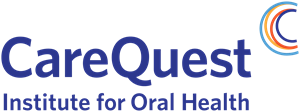From State Impact PA
Correction: Nicole Deziel of the Yale School of Public Health says Pennsylvania’s wellhead setback from schools and homes should be 1,000 meters. That distance was incorrect in the original version of this story.
Children who live close to fracking sites in Pennsylvania have a higher risk for the most common form of childhood cancer, a new study found.
Researchers at the Yale School of Public Health used the Pennsylvania Cancer Registry, along with state data on unconventional oil and gas drill sites, to determine that children born within two kilometers, or 1.24 miles, of an active well site were two to three times more likely to be diagnosed with acute lymphoblastic leukemia between the ages of 2 and 7.
The study was published in the journal Environmental Health Perspectives. It looked at 405 children diagnosed with that type of leukemia between 2009 and 2017, and included 2,080 controls matched by birth year.
“The magnitude of the elevated risk that we observed was fairly striking,” said Dr. Cassandra Clark, a post-doctoral fellow at the Yale School of Public Health and co-author of the report. “After accounting for a variety of socioeconomic, demographic and biological factors that could potentially be underlying this association, it was consistent.”
Acute lymphoblastic leukemia is one of the most common childhood cancers, which is why the researchers chose to look at it. Additionally, a known cause is benzene, a chemical released by oil and gas drilling activities into both air and water. The five-year survival rate in children with acute lymphoblastic leukemia is high, at 90 percent.
Unconventional gas development is also referred to as fracking, which is a part of the overall process that injects water with chemicals at high pressure into shale rock formations deep underground to release oil and gas. Water that returns to the surface often includes those chemical additives, along with long-buried naturally occurring toxins and radiological material.
More than 10,000 unconventional natural gas wells were drilled and fracked in Pennsylvania between 2002 and 2017. The Department of Environmental Protection has reported more than 1,000 spills in that period, along with fielding about 4,000 residential well water complaints between 2005 and 2014. Many who live in rural areas rely on water from private wells, about one-third of which are within two kilometers of a wellhead.
The natural gas industry maintains it operates under regulations meant to protect public health. The Marcellus Shale Coalition has said the industry’s “top priority” is protecting health and safety of workers, the environment, and people who live near fracking operations.
One unique aspect of the Yale research includes tracing potential drinking water exposure.
“It really is a superb study,” said Dr. Bernard Goldstein, former dean of the University of Pittsburgh School of Public Health and an expert in environmental causes of childhood leukemia.
Goldstein is not associated with this study. He has conducted prior research into exposures due to oil and gas wastewater in Pennsylvania.
“It looks at a potential problem in ways that include new exposure metrics, which are really needed,” he said.
Goldstein says that though the factors that contribute to childhood leukemia are complex and still unclear, benzene is the one known link.
The interdisciplinary team of researchers included experts on leukemia and environmental science, as well as hydrogeologists. In addition to the location of well sites, researchers mapped individual watersheds and determined the flow of water from well heads to the children’s homes. They did not survey the families to determine individual sources of drinking water.
Still, they say the research shows that a child living within 1.2 miles of a well site, which is within their watershed, could be at a higher risk of exposure through drinking water.
Previous research has shown an association between fracking activities and health impacts, but determining the path to exposure is more difficult.
“I think we have about 50 epidemiological health studies demonstrating increased adverse health outcomes in communities that live near unconventional oil and gas sites,” said Dr. Nicole Deziel, a co-author of the study and associate professor at the Yale School of Public Health in the Department of Environmental Health Sciences. “I think it would be very important to understand which exposures or hazards might be driving these associations.”
Deziel says she wants the study to impact public policy, including regulations on residential setbacks from wellheads and density of drilling sites. Pennsylvania requires a 500-foot setback from schools and homes. Deziel says it should be 1,000 meters, especially since her findings show greater impacts for children exposed in utero.
Those results, she said, suggested “that that may be a sensitive time window, which is also consistent with some other studies of other environmental exposures.”



 A new journal article, co-authored by the CareQuest Institute for Oral Health, concludes that Medicaid enrollees experience higher oral cancer and throat cancer incidence, prevalence, and mortality compared with commercially insured adults. The article is based on a study that compared all cases and new cases of oral and throat cancers among approximately 38,000 Medicaid enrollees and approximately 27,000 individuals with commercial medical insurance. Researchers found that total cancer treatment costs were higher for those with commercial insurance and that cases of oral and throat cancers were lower among adults who had seen a dentist within the prior year.
A new journal article, co-authored by the CareQuest Institute for Oral Health, concludes that Medicaid enrollees experience higher oral cancer and throat cancer incidence, prevalence, and mortality compared with commercially insured adults. The article is based on a study that compared all cases and new cases of oral and throat cancers among approximately 38,000 Medicaid enrollees and approximately 27,000 individuals with commercial medical insurance. Researchers found that total cancer treatment costs were higher for those with commercial insurance and that cases of oral and throat cancers were lower among adults who had seen a dentist within the prior year.
